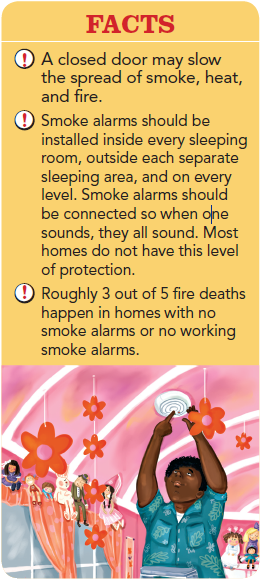Smoke alarms are a key part of a home fire escape plan. When there is a fire, smoke spreads fast. Working smoke alarms give you early warning so you can get outside quickly.

SAFETY TIPS
• Install smoke alarms in every bedroom. They should also be outside each sleeping area and on every level of the home. Install alarms in the basement.
• Large homes may need extra smoke alarms.
• It is best to use interconnected smoke alarms. When one smoke alarm sounds, they all sound.
• Test all smoke alarms at least once a month. Press the test button to be sure the alarm is working.
• Current alarms on the market employ different types of technology including multi-sensing, which could include smoke and carbon monoxide combined.
• Today’s smoke alarms will be more technologically advanced to respond to a multitude of fire conditions, yet mitigate false alarms.
• A smoke alarm should be on the ceiling or high on a wall. Keep smoke alarms away from the kitchen to reduce false alarms. They should be at least 10 feet (3 meters) from the stove.
• People who are hard-of-hearing or deaf can use special alarms. These alarms have strobe lights and bed shakers.
• Replace all smoke alarms when they are 10 years old.
